by GaryG
When it comes to discussing watches, so much attention is placed – and appropriately so – on the dials and movements that it’s easy to forget the other components that make a watch a watch. A while ago, in doing my small part to remedy this oversight, I took up the topic of watch cases with some of my favorite examples in Why I’m All About That Case, That Case . . .
If cases get too little attention, the straps and bracelets that turn a timepiece into a wristwatch seem to get even less. And of late, especially with the controversy surrounding the introduction of the “integrated” bracelet of A. Lange & Söhne’s new Odysseus, I’ve been pondering metal watch bracelets and what makes them so special.
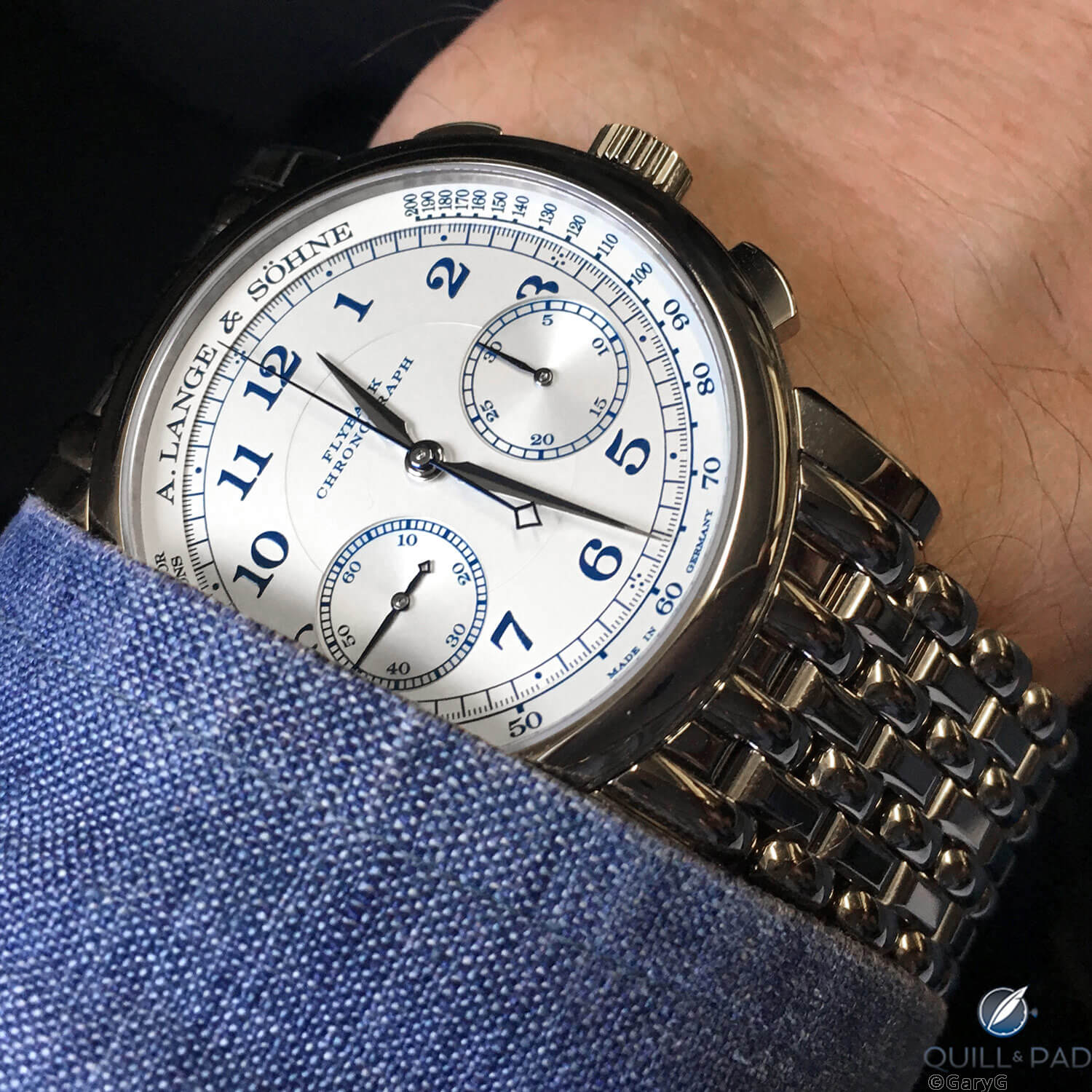
A friend’s A. Lange & Söhne 1815 Chronograph Boutique Edition on fitted white gold bracelet
Strap people and bracelet people
If you went to your watch box right now and looked in, would you see mostly leather, fabric, or rubber straps or metal bracelets? (Yes, I know that Rolex’s rubber strap is technically called an Oysterflex bracelet but stay with me here).
For a very long time, I was a “strap guy.” My very first watch, a Timex Marlin received as a gift from my dad, was on some sort of leather-like strap, and I subsequently wore it on both NATO and bund straps.
The very first watch that I bought for myself was on a relatively funky suede-look blue strap; and through several more watches, including my first pieces from Jaeger-LeCoultre on those splendid honey ostrich straps, I was, for better or worse, bracelet-free.
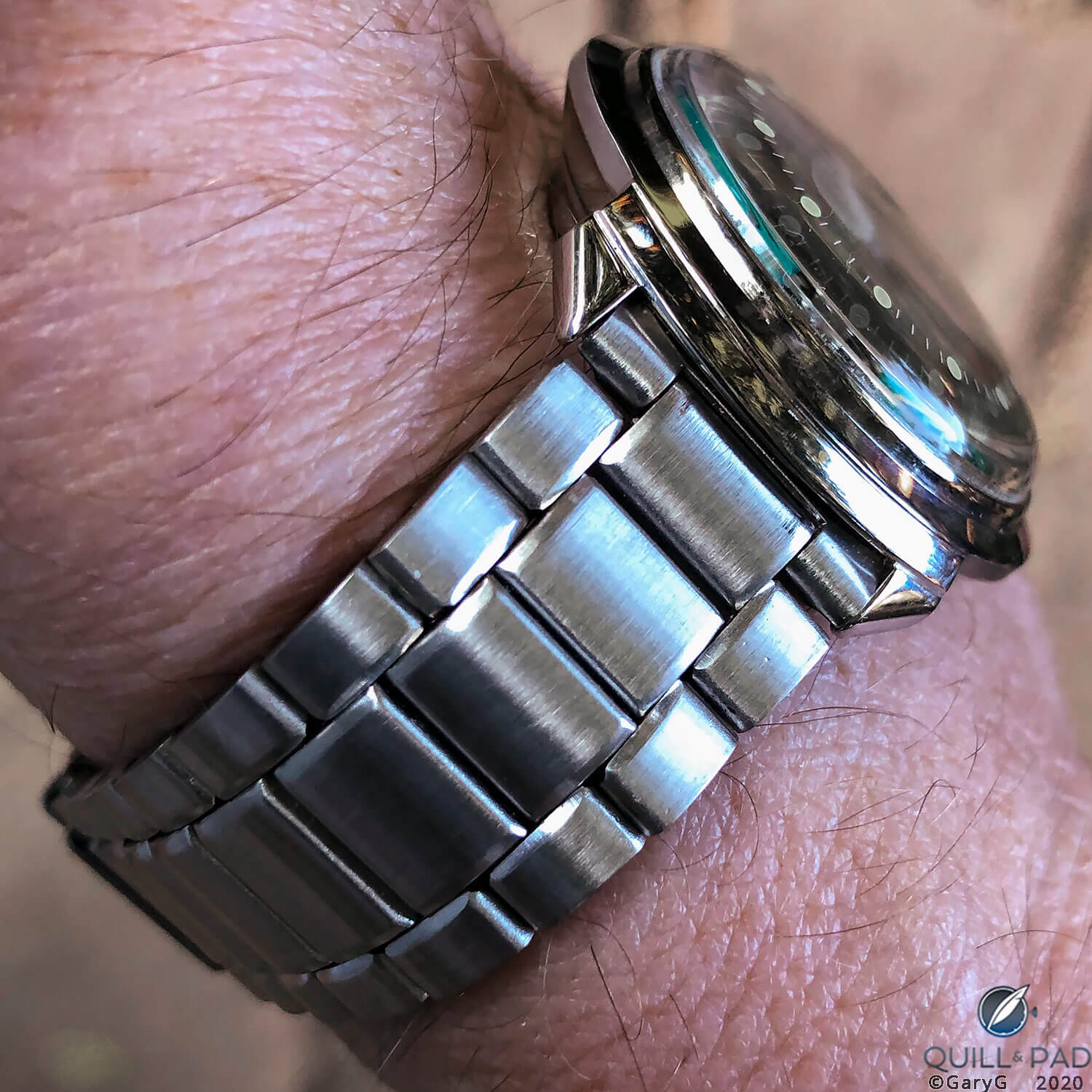
A new era – for the author, anyway: Accutron Spaceview bracelet
That finally changed with the purchase of two watches: an Accutron Spaceview, whose acquisition scratched an itch I’d had since I’d first seen one in a shop window as a kid, and an Omega Speedmaster Mark 40 triple date purchased at the Frankfurt Airport duty-free during about my twentieth trip through there on my way back and forth on client business.
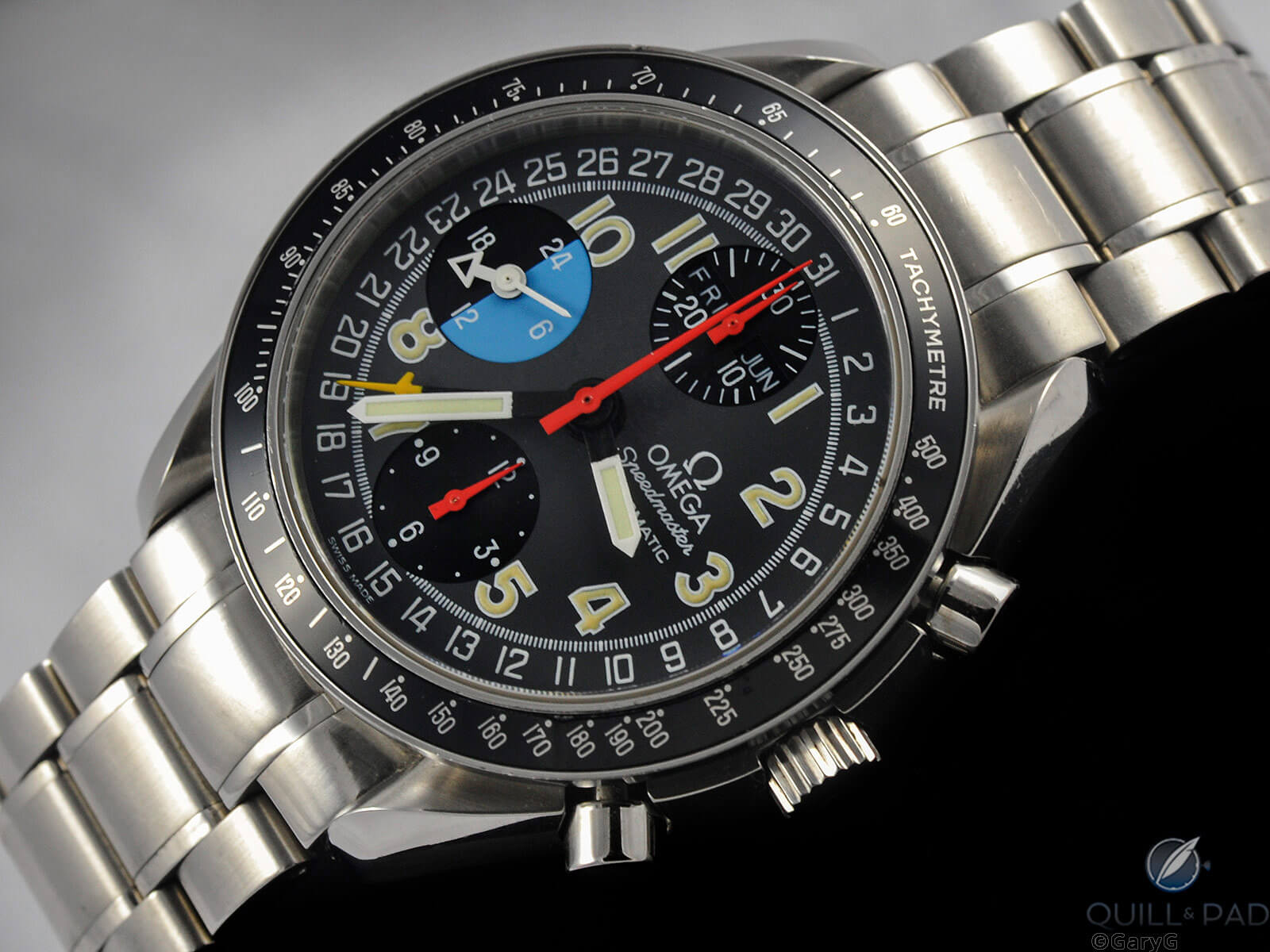
The author’s one-time Omega Speedmaster Mark 40, Ref. 3520.53
Neither of those watches has what I would call stellar bracelets: the Accutron’s looks solid enough but is incredibly lightweight and, even though I dearly loved the Speedy, I eventually sold it because the buckle closure didn’t sit flush but instead had a metal tab that stuck up, snagging and scratching whatever came within range.
Moving on up: bracelets to love
Several years later, thanks to a local dealer I had the opportunity to try on – and fall in love with – another bracelet watch: the Parmigiani Kalpa.
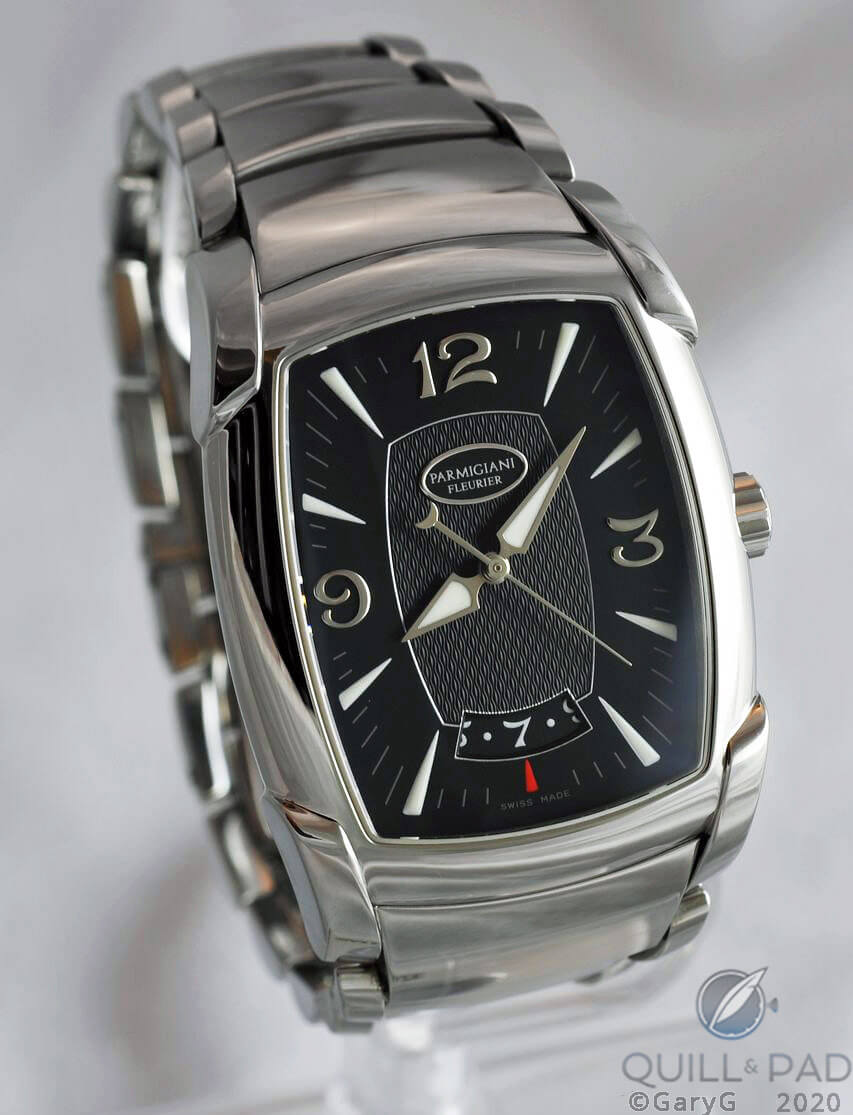
Parmigiani Kalpa on fitted steel bracelet
Whether the overall look of the watch is to your taste or not, I’ll argue that the bracelet itself is an excellent one for several reasons:
- It has a fluid feel and drapes easily around the wrist.
- The clasp (in this case, a two-sided one) can easily be positioned under the flat spot on your wrist, helping to balance the watch on the wrist and avoiding that jabbing sensation that comes from the edge of a too-large or misplaced folding clasp.
- The look of the bracelet is sufficiently different from that of the leather strap that swapping one for the other gives the impression of having a “new watch.”
- The design language of the bracelet is consistent with that of the watch head and provides a smooth continuation of its shapes and textures around the wrist.
- While it is removable, the bracelet is also fitted to the case edges, lending a solid feel and visual continuity.
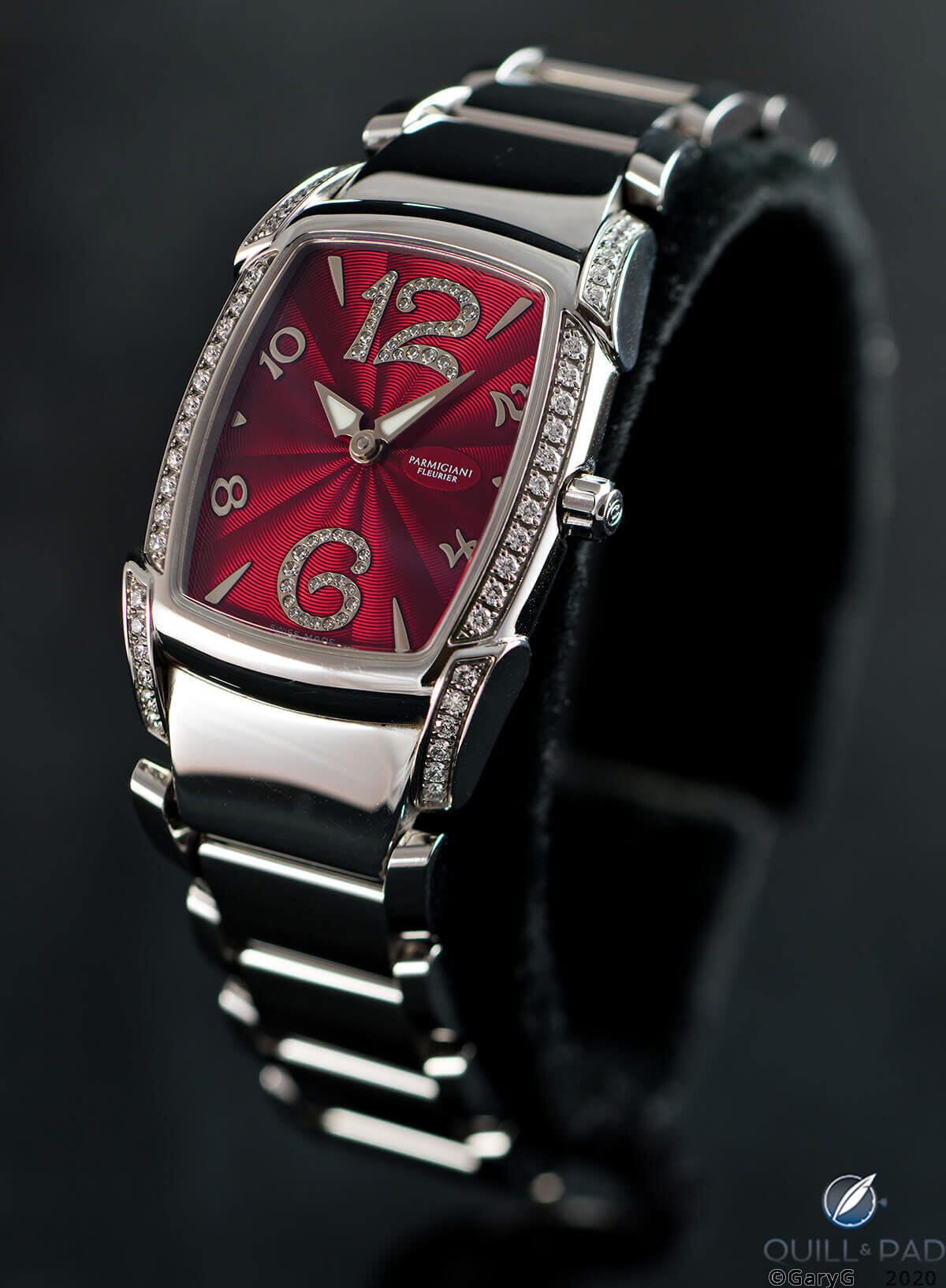
MrsGaryG’s Parmigiani Kalpa Piccola with fitted bracelet
Interestingly enough, the Kalpa provides an earlier example of what A. Lange & Söhne attempted with the Odysseus: an “integrated” but removable bracelet that is matched with a lugged case and whose outer margins broaden to match the outside edges of those lugs.
I think that Parmigiani did quite a good job here: among other things, the line between the first and second bracelet links is broken up by the offset positioning of the central and outer link sections, and the leading edges of the links are generously rounded to avoid the appearance of a jarring sharp edge as the bracelet drops around the near edge of the wearer’s wrist.
When MrsG looks into her watch drawer, there’s another piece that beckons with its bracelet’s comfort: her black-dialed Blancpain with its legendary X-71 bracelet. Like the bracelet on the Parmigiani, the X-71 has a fluid look that is backed up by a very comfortable wrist feel, as I can also attest having tried out several examples of the men’s X-71.
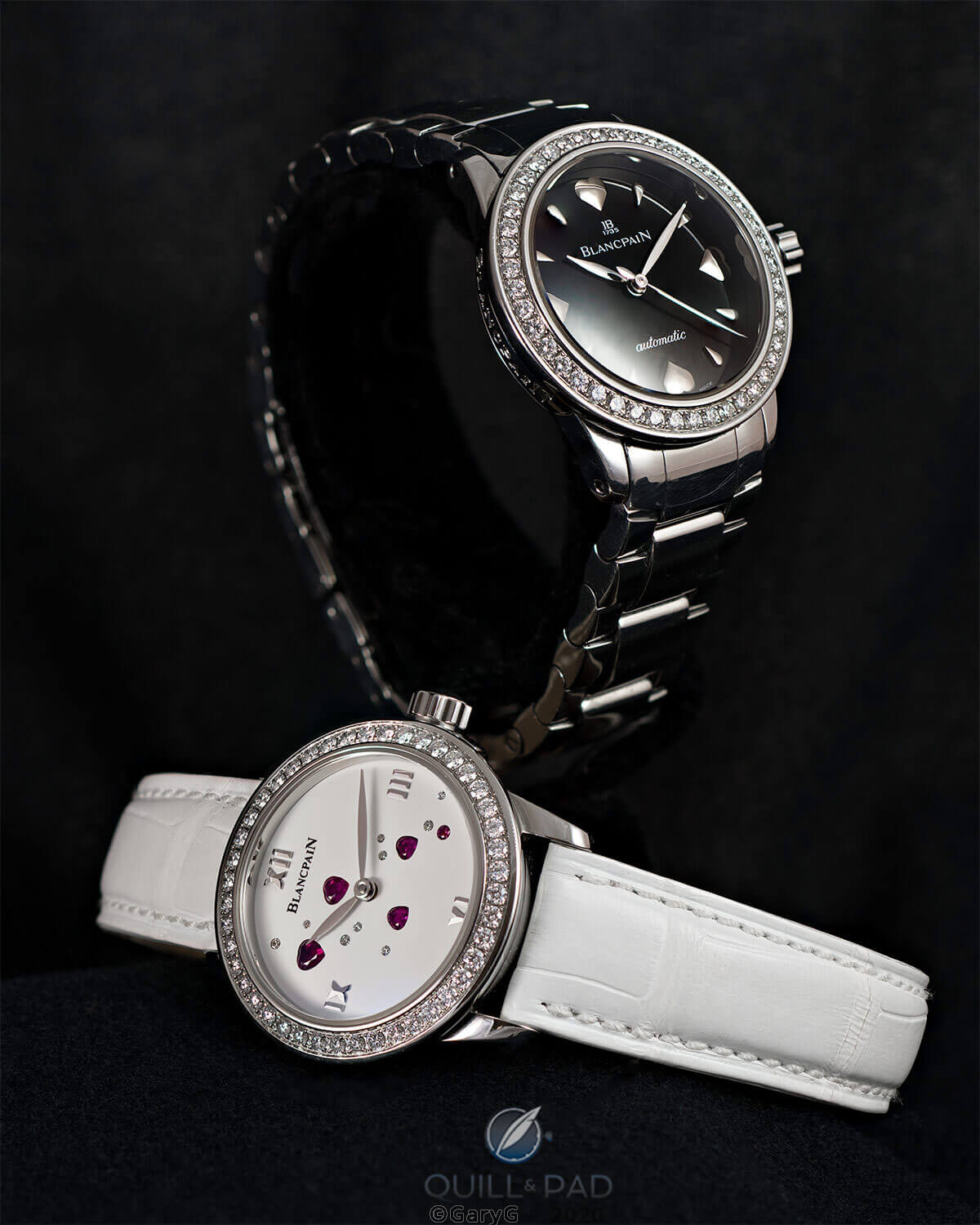
At rear, MrsGaryG’s Blancpain daily wearer with fitted X-71 bracelet
Another favorite bracelet piece of mine – and a quite affordable one at that – is my Jaeger-LeCoultre Reverso Grand GMT on its fitted steel bracelet with a squared-off beads of rice look. In addition to looking darn good, feeling great, and having an easily centered two-sided clasp that frames a central square element engraved with the JLC logo, the length of this bracelet is also adjustable in real time through the use of hidden, hinged half links inside each side of the clasp similar to those on many Rolex models.
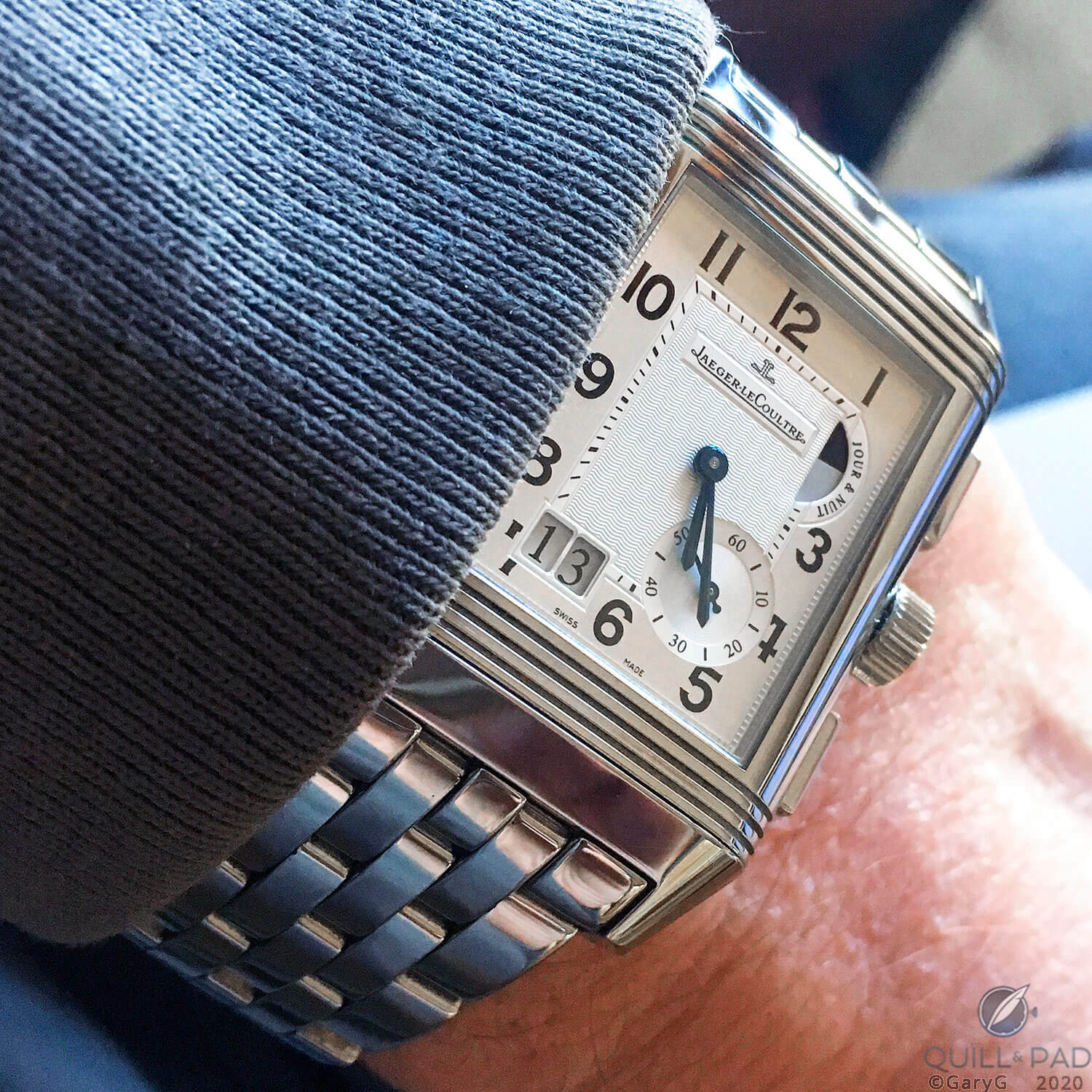
Comfort, looks, and value: Jaeger-LeCoultre Reverso Grand GMT on its fitted bracelet
At some point, it was probably inevitable that I would take the plunge into the world of precious metal bracelet watches, and when I did it was with a model that is still one of my favorites: the second-generation Overseas from Vacheron Constantin.
The yellow gold bracelet dual-time version in the dealer’s window had been exercising an almost demonic grasp on my soul for months by the time I finally went in, cut my best deal, and walked out with what felt like a ton of solid gold on my wrist.
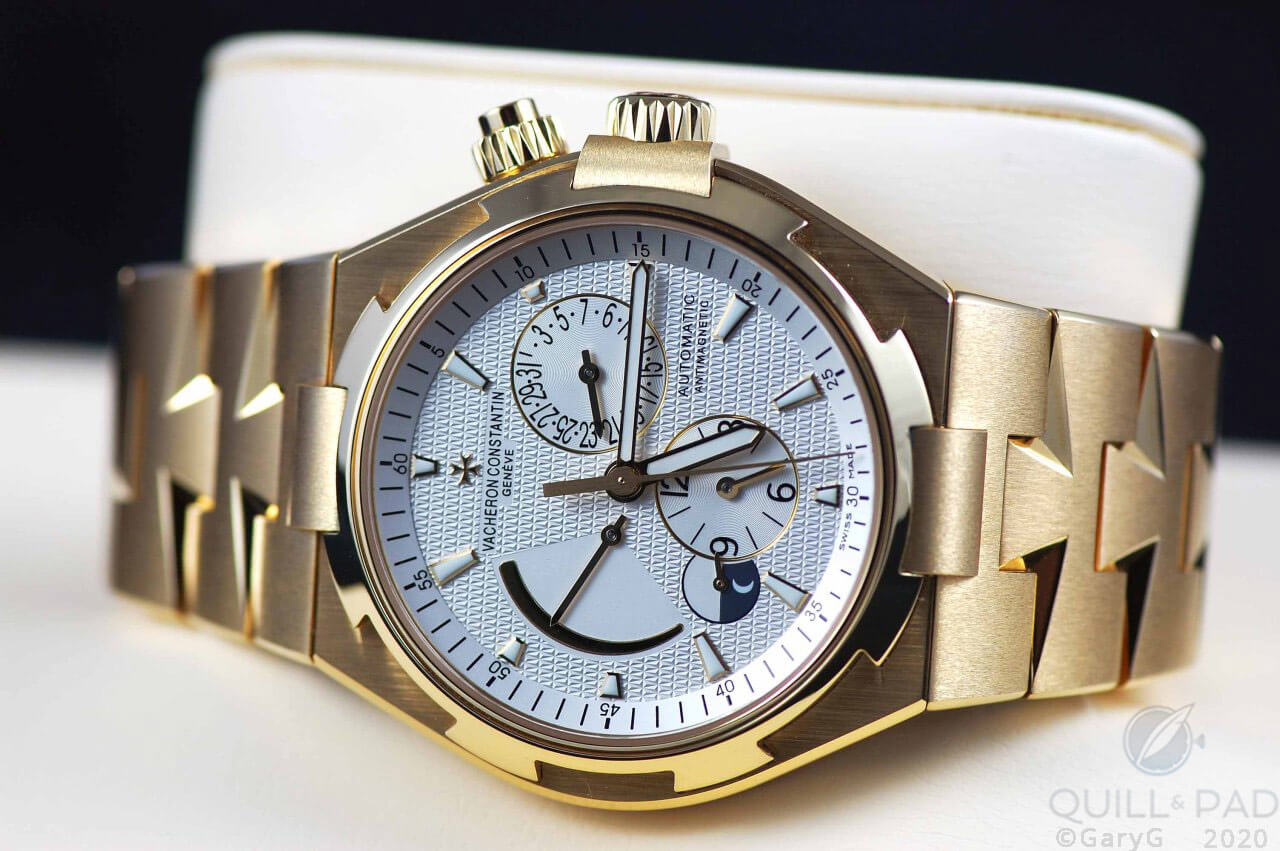
The “Bling Special”: Vacheron Constantin Overseas Dual Time in yellow gold on bracelet
I don’t know who designed Vacheron Constantin’s Maltese Cross bracelet, but in my view it’s truly inspired. I could go on for quite a while about the clever integration of the brand’s cross motif into the design, the subtle use of brushed surfaces and bright edges to provide visual interest without blowing out your retinas, and the comfortable way that it sits on your wrist.
I’m not sure why I still don’t own that piece! Actually, I do know why: MrsG gave me “the look” every time she saw it on my wrist until I finally admitted defeat, sold the watch to an eager buyer, and replaced it with a more modest Overseas version: the “Deep Stream” Chronograph in steel and titanium. That watch came with leather and rubber straps, but I loved the bracelet enough that I ponied up the extra money to buy the steel bracelet as well.
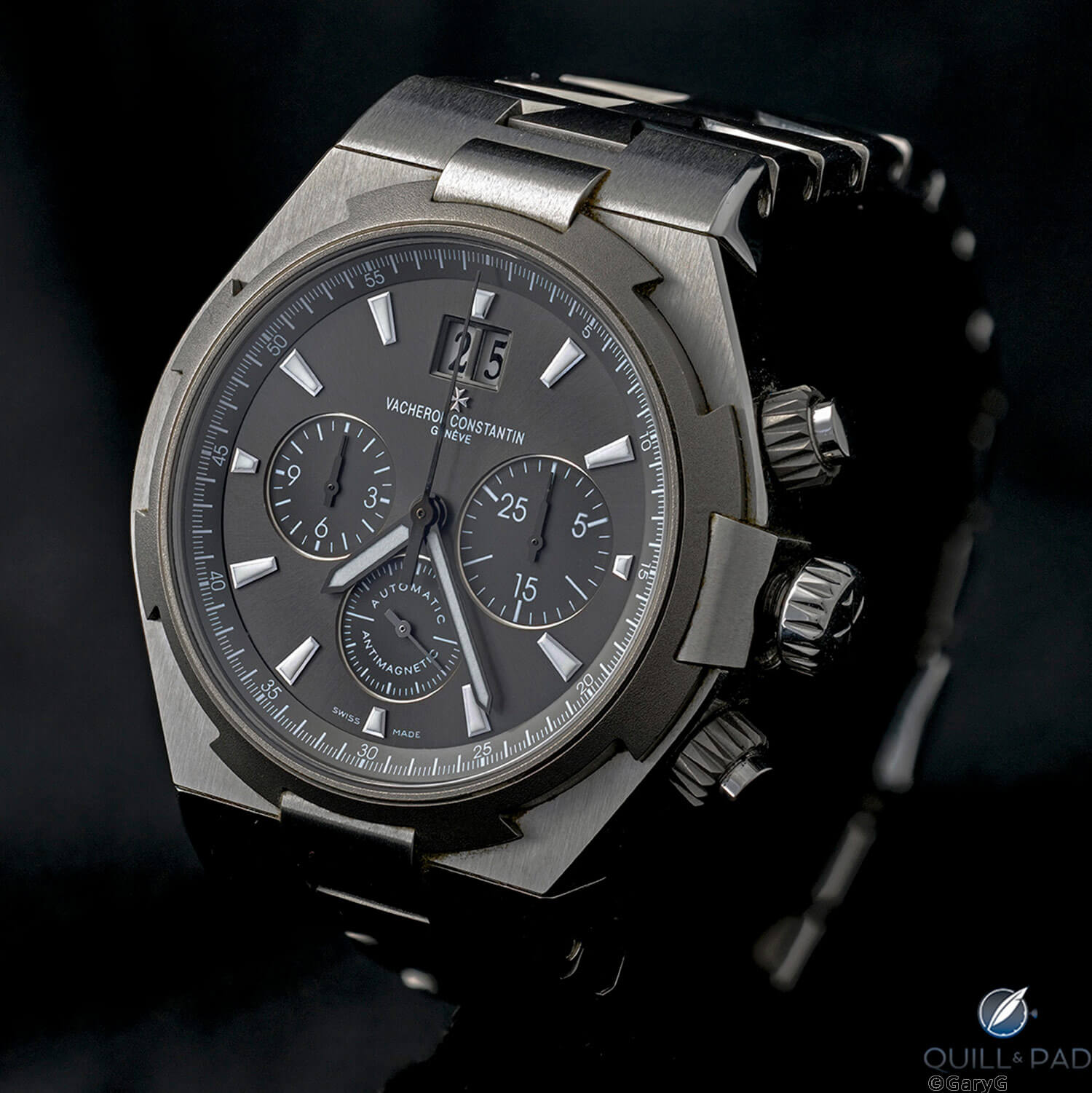
The author’s Vacheron Constantin Overseas Chronograph in steel and titanium on Maltese Cross bracelet
What about vintage bracelets?
I’m tempted to say that all vintage bracelets are awful, but that would be wrong!
Certainly, I’m left to roll my eyes heavenward each time I handle an older Rolex with its sloppy bracelet, but there are some wonderful counter-examples out there, including some from the early days of wristwatches.
One piece that comes to mind in particular is a lovely Cartier Grand Tank Cintrée made in 1927, it’s in platinum with a gorgeous matching platinum Cartier bracelet with a platinum and pink gold clasp.
I drooled over it when I saw it at the Phillips New York auction preview in October of 2017, and while it was well out of my range at its sale price of $350,000 I do think from time to time how lovely it would be to have it for my own.
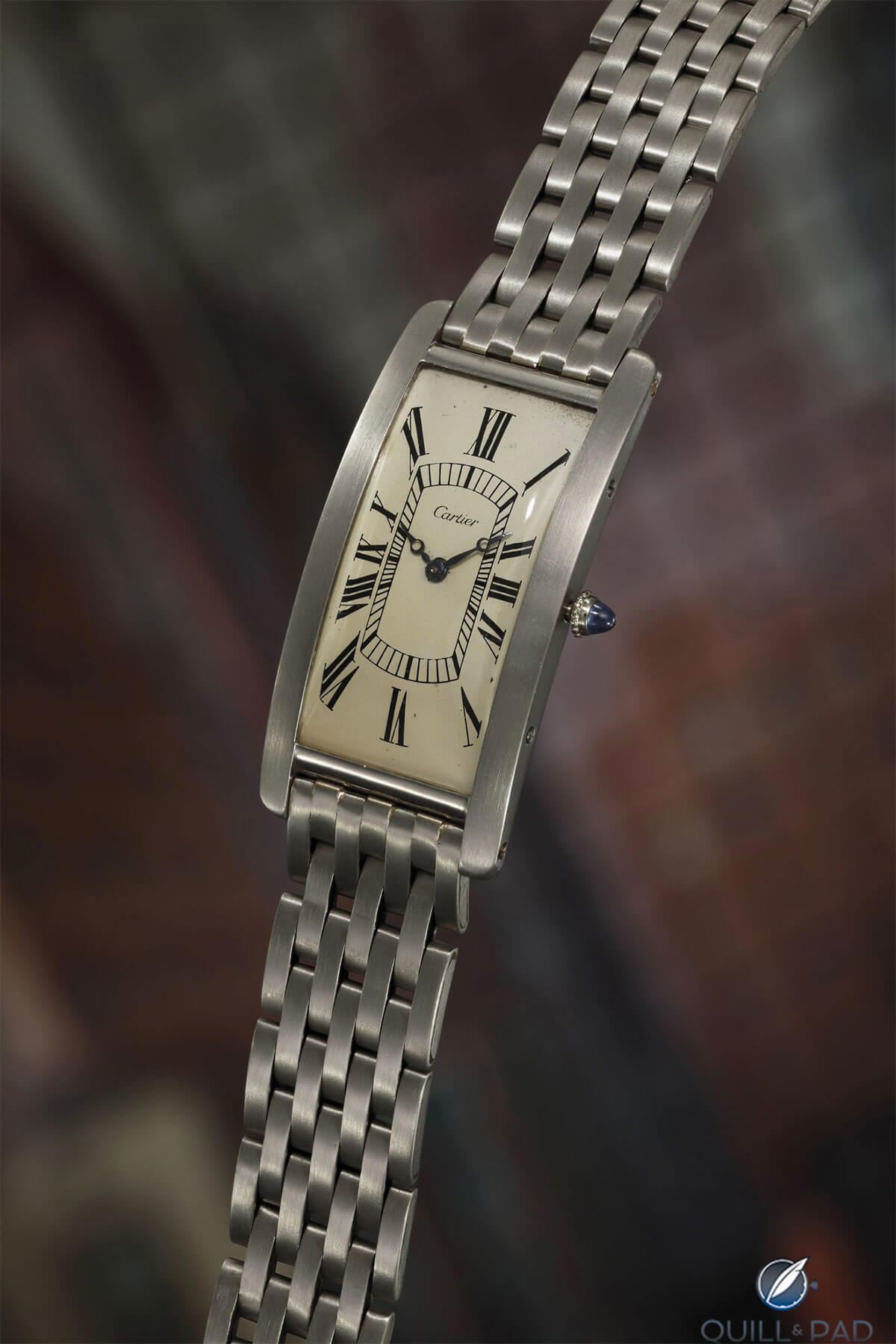
Cartier Grand Tank Cintrée from 1927 in platinum with matching bracelet (photo courtesy Phillips)
I do have a couple of vintage bracelet pieces of my own with bracelets of differing robustness but (to me, at least) similar appeal. The Milanese steel bracelet on my Omega Seamaster 600 Ploprof is a model of solid construction, practical expandability, and all-conditions usefulness, while the period-correct gold bracelet on my Vacheron Constantin Reference 4560 triple calendar is considerably daintier but, in my eyes, adds considerably to the charm of the watch. And finally, with the Reference 4560’s fairly restrained look I have a gold-bracelet watch that makes MrsG smile!
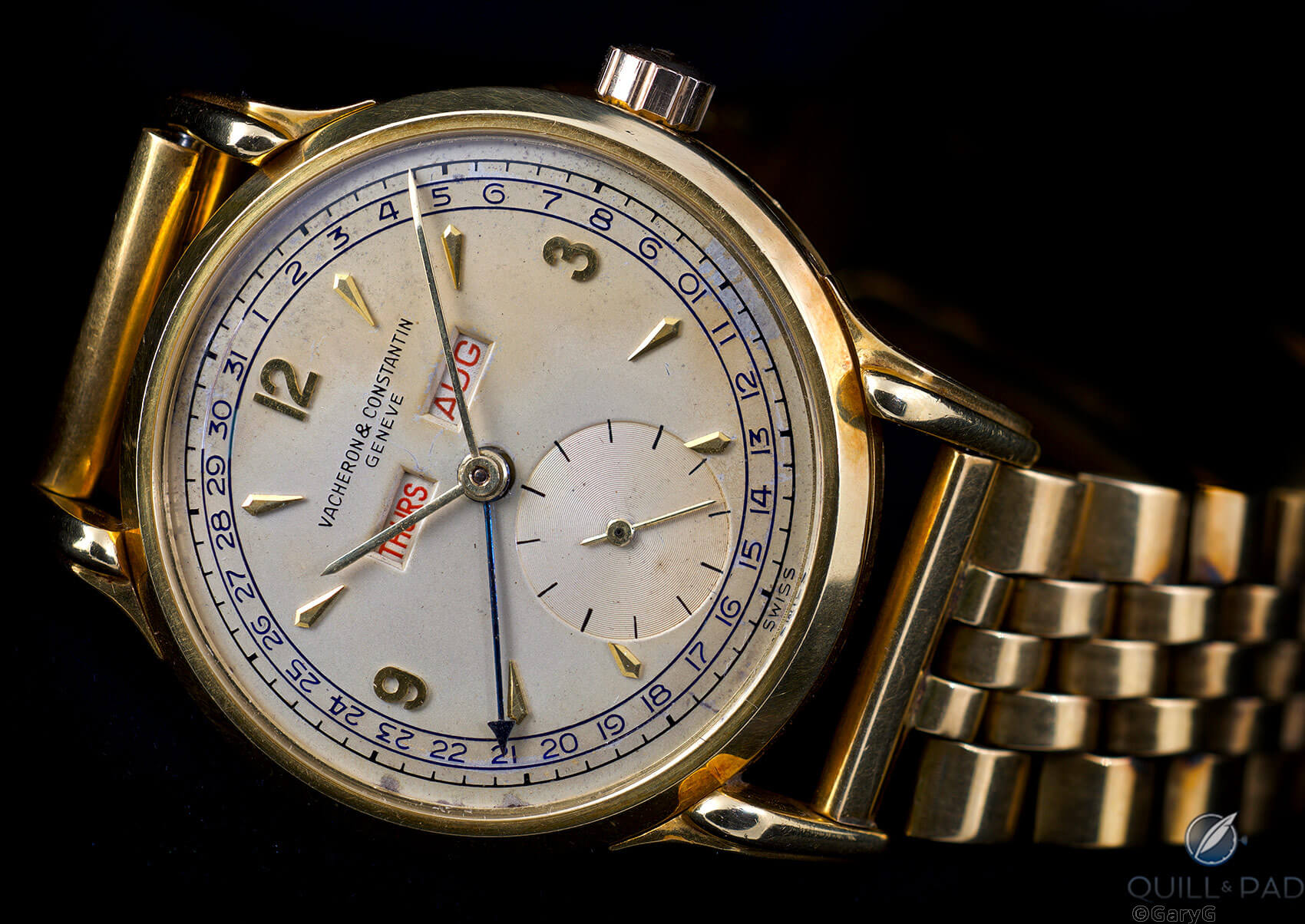
Vacheron Constantin Ref. 4560 on gold bracelet
Top of the heap: Wellendorff bracelets for A. Lange & Söhne
When I think of bracelets that make me smile, at the top the list are the chunky precious-metal pieces made for A. Lange & Söhne by German jewelry brand Wellendorff.
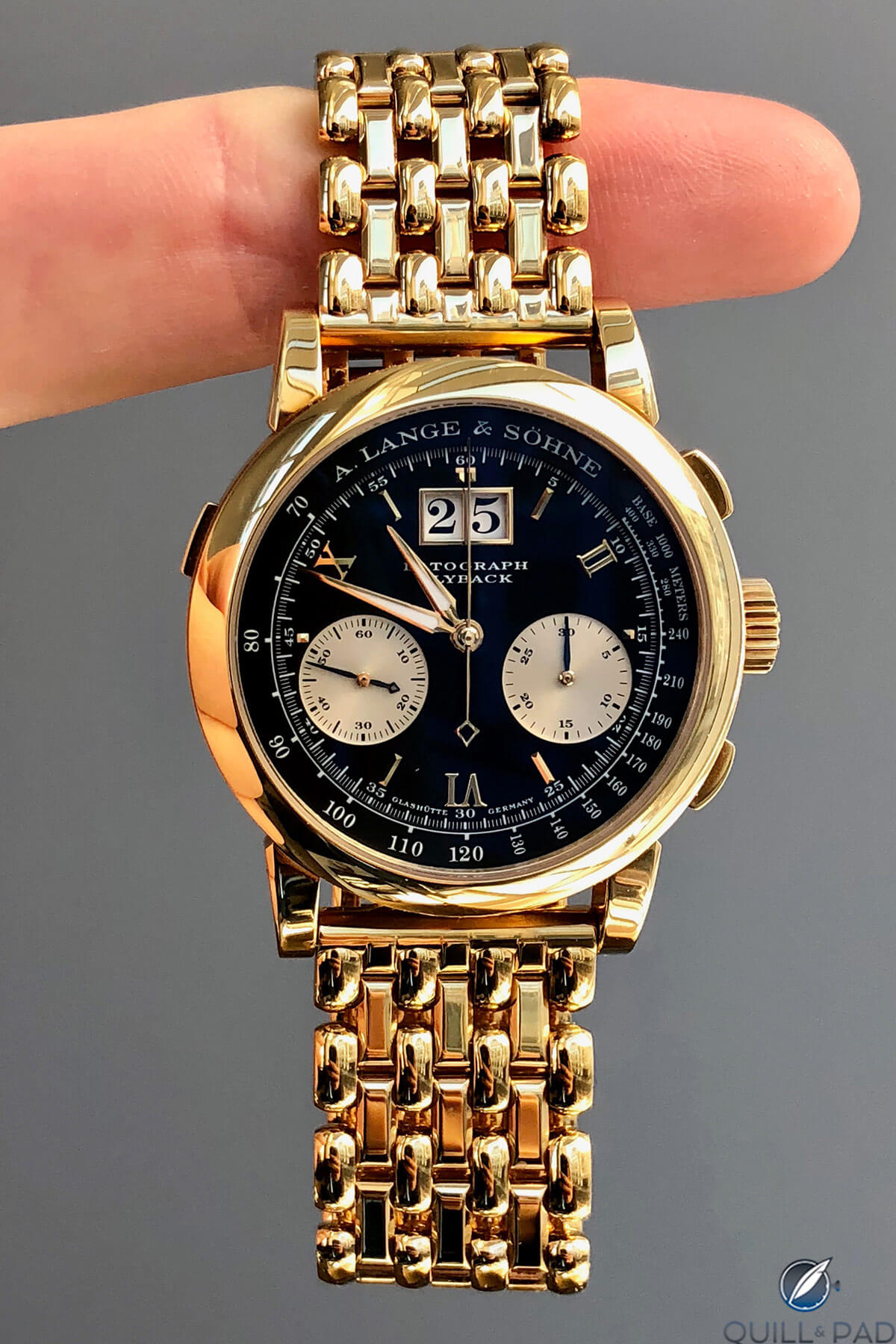
Inspiration: Wellendorff/A. Lange & Söhne bracelet on a friend’s “yellowjacket” Datograph (photo courtesy @thebrokendato)
I’d seen photos of the A. Lange & Söhne bracelets before, but it wasn’t until mid-2017 when I saw one in person on collector Jeffrey Binstock’s Tourbillon Pour le Mérite that I got the fever.
Shortly thereafter, I had the chance to try on the white gold 1815 Chronograph with its fitted bracelet owned by my friend “tahoeblue.” And by the time I saw the yellow/black Datograph owned by pal Robert (aka @thebrokendato) with its own yellow gold bracelet, I was pretty much foaming at the mouth.
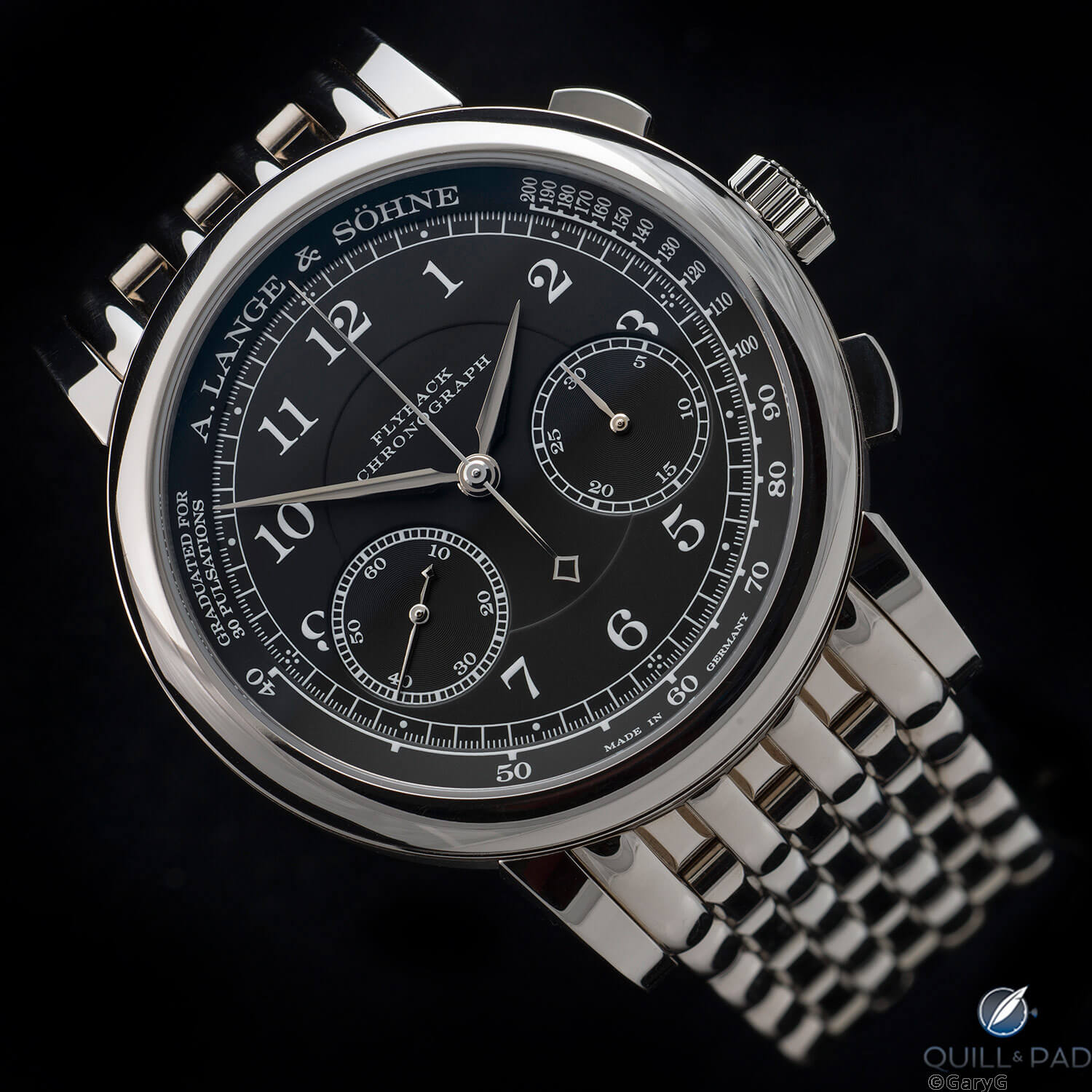
Out of the darkness: A. Lange & Söhne 1815 Chronograph in white gold with matching fitted bracelet
In late 2018, Robert proved his true mettle as a friend by letting me know that he had seen a yellow gold Wellendorff/Lange bracelet for sale in Germany – on eBay, of all places. I won’t take you through all of the ins and outs of the transaction, but I ultimately took the plunge and the seller sent the bracelet to a good friend of mine in Germany.
We were both expecting it to arrive in a securely tracked shipment, but as it turns out my friend found it in a padded brown envelope in her ordinary mail! She brought it to SIHH in January of 2019 where Robert Hoffmann of A. Lange & Söhne installed it on my PLM at the little watchmaker’s bench in the Lange booth. And I haven’t taken it off the watch since.
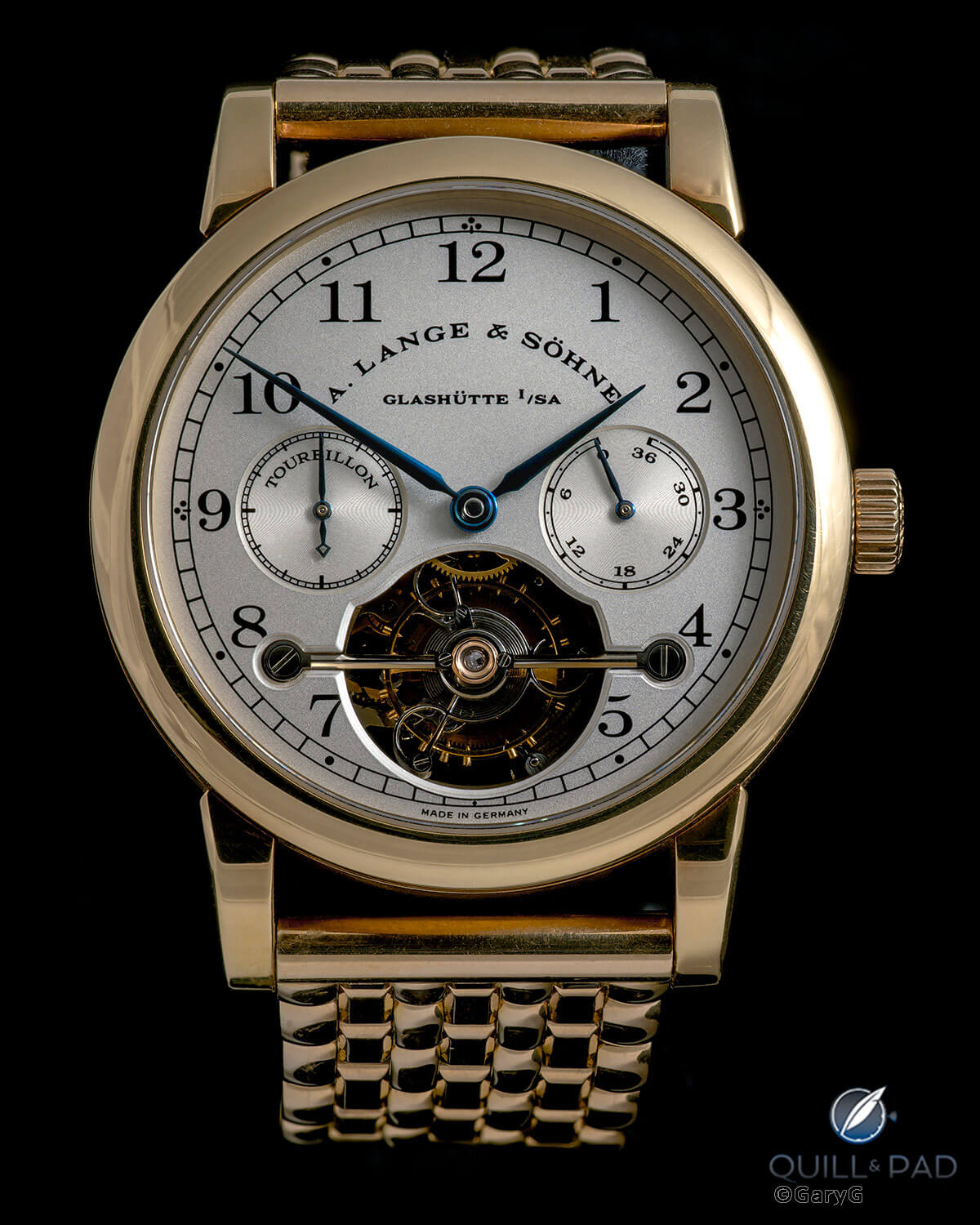
The author’s A. Lange & Söhne Pour le Merite Tourbillon on its Wellendorff/Lange bracelet
For me, the bracelet totally transforms the look of the watch, taking it from a calm classic on dark leather to a timeless – if slightly ostentatious – and proud statement of what makes A. Lange & Söhne, and the Tourbillon Pour le Mérite, so unique. I’m not 100 percent sure that Herr Walter Lange would have approved of the look, but it is fun to think about whether he might have considered putting one of these bracelets on his own yellow gold Tourbillon Pour le Mérite.
One famous figure who apparently didn’t need any convincing was the GOAT, Michael Jordan, who in this photo surfaced by Quill & Pad contributor Nick Gould is looking dapper with a platinum Datograph and accompanying bracelet.
What about that other A. Lange & Söhne bracelet?
Of all of the aspects of A. Lange & Söhne’s release of the Odysseus, its first-ever steel active-wear watch, the one that drew the most attention was the somewhat unconventional “integrated” bracelet. How does it stack up against the other bracelets we’ve been looking at here?
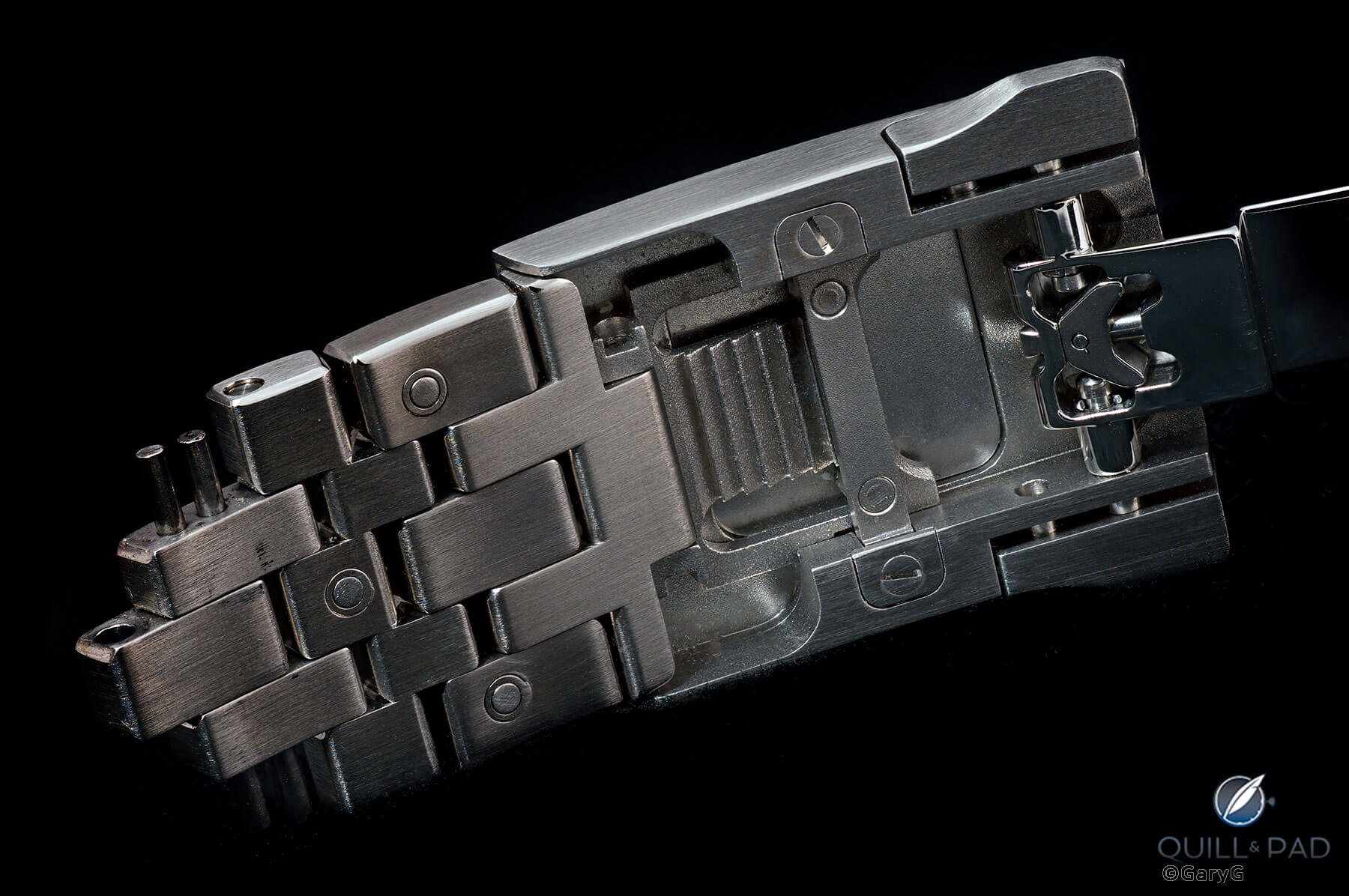
Adjustment mechanisms, A. Lange & Söhne Odysseus bracelet
The pros:
- It’s wonderfully adjustable, both at a macro level (the small circular buttons seen in the photo above can be pushed with the supplied tool or a toothpick to add or remove links in seconds) and a micro level (a push button on the rear of the clasp allows the bracelet to be lengthened or shortened over a range of 7 mm without removing it from the wrist).
- It’s very comfortable – although it’s a good thing that shuffling links around is so easy as the single-sided clasp is long enough that it took me a decent amount of fiddling to find that “just right” spot for the clasp under my wrist.
- It is consistent with the design concept of the watch; in particular, A. Lange & Söhne made a commitment to retaining the traditional Lange case profile with its curved lugs, and the bracelet both fits between the lugs and swoops out to meet the lugs at their outer ends.
- It uses brushed and polished elements to good advantage to draw the eye without being too flashy.
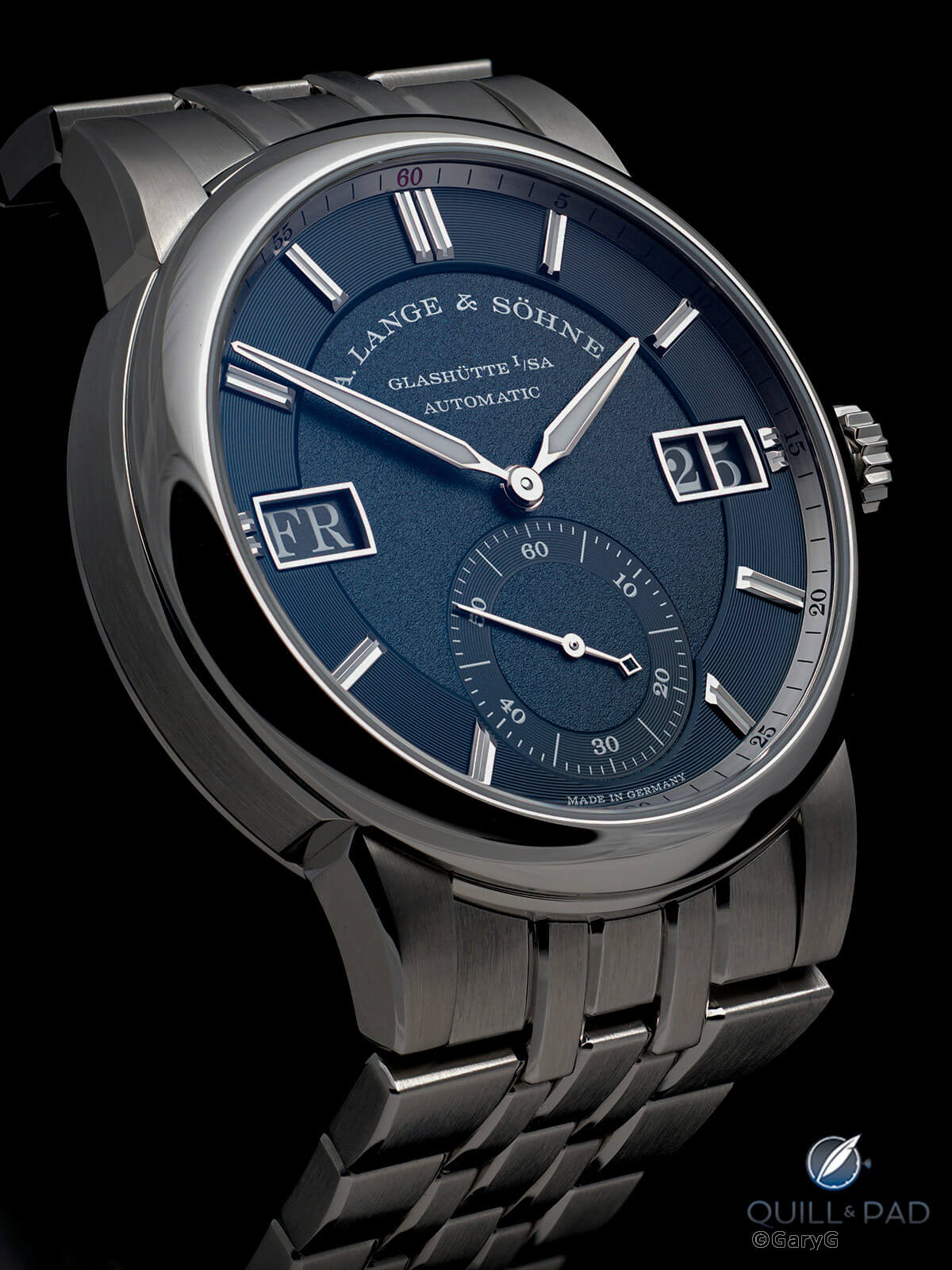
A. Lange & Söhne Odysseus, showing the dividing line between first and second links
The cons:
- Even though there are spring bars that allow the bracelet to be removed, A. Lange & Söhne doesn’t (yet) offer any alternative straps – unlike Vacheron Constantin, for instance, whose latest Overseas models not only come with metal, rubber, and leather straps but also with a clever quick-release system that allows them to be swapped in seconds without tools.
- Unlike the Parmigiani Kalpa bracelet, the visual effect when you look at the spot between the first and second links is one of separation, not connection, despite the two small central prongs that extend across the gap. Also unlike on the Kalpa bracelet, the second links on the Odysseus lack the pronounced rounded bevels that would provide a smooth visual transition regardless of the angle at which the bracelet drapes around a given wearer’s wrist.
- As mentioned above, the single-sided clasp giveth (marvelous adjustability) but it also taketh away (some wearers may find that the long underlying blade is uncomfortable on the wrist).
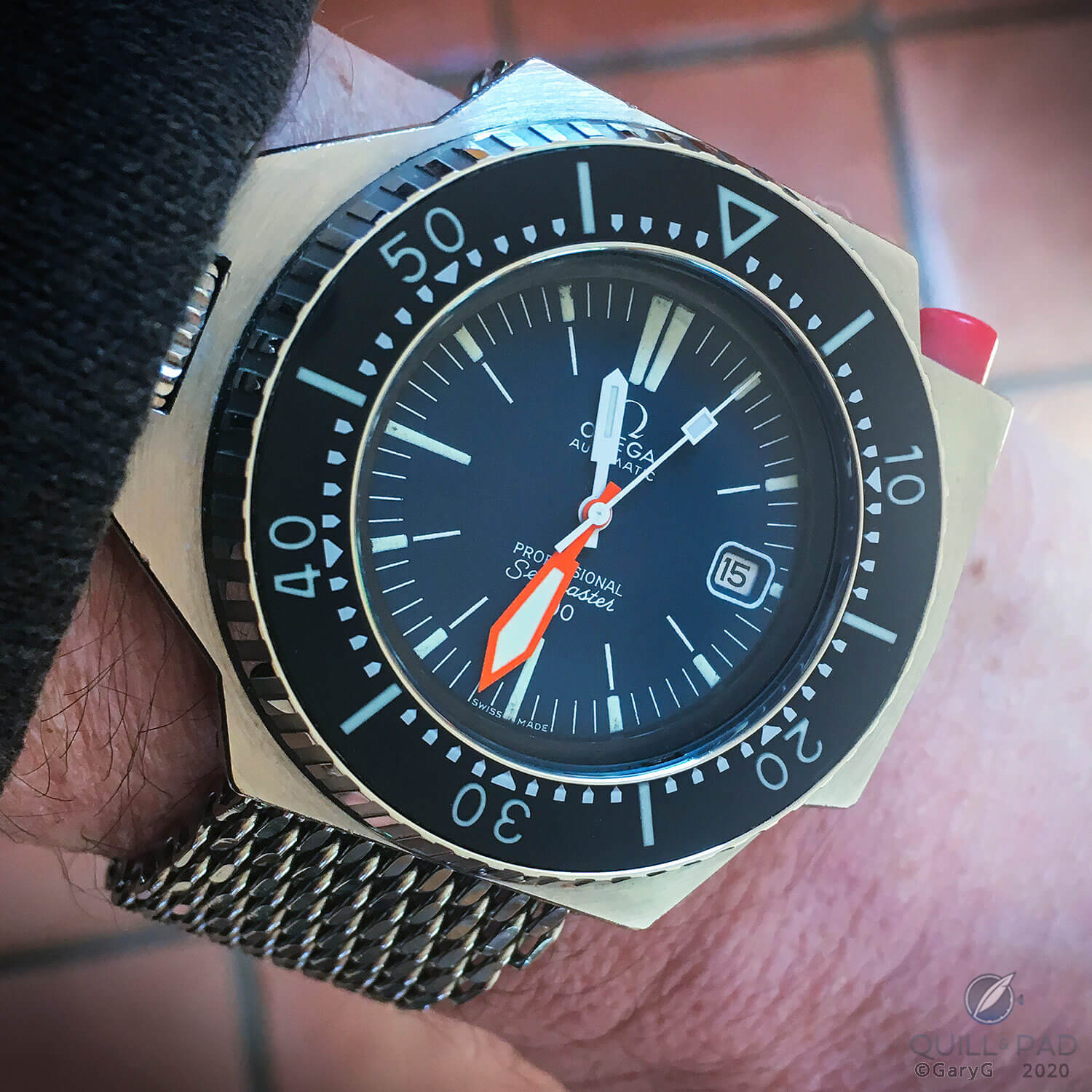
Parting shot: another favorite, the Milanese bracelet on the Omega Ploprof
What are your favorite (and least favorite) metal watch bracelets? I have so little experience with the Nautilus and Royal Oak bracelets, for example, that I haven’t ventured to opine on them here – but my guess is that those, and others, either delight or frustrate you. I’ll look forward to reading your thoughts in the comments below.
* This article was first published on June 20, 2020 at Heavy Metal: Great (And Not So Great) Watch Bracelets.
You may also enjoy:
Why I’m All About That Case, That Case . . .
Why I Bought It: A. Lange & Söhne Odysseus (A Photofest!)
Watch Design: Originality, Similarity, Or Imitation?
Leave a Reply
Want to join the discussion?Feel free to contribute!





















































I’m surprised I, a strap guy is the first response, I will say I have had good wearing metal bracelets, I still prefer the comfort and casual look of rubber but maybe that’s because my main summer watch is a diver, the mighty SXK 007 ! I have a small wrist, just 6.25 inches, but divers should be a bit big and I like the sporty look, with a metal bracelet I think it would just be that extra that makes it go from sporty to mega and that will keep it on a strap all year long for me anyway !
Hi Gary,
Bracelets are so important to the overall look of the watch. You have some beautiful examples of Wellendorff bracelets. Do you know if they still make them? I have inquired but never received an answer. I am guessing the answer is largely “no”. But I bet if I was a head of state (or maybe Gary G?!) that maybe they would make a one-off?
I think the answer is as you surmise: largely no, but if you’re “someone” you might get a different answer…
Hi, Bill — I’m not aware of any recent bracelets made by Wellendorff, and I’m not enough of an insider to know the answer to your question with certainty. My pals and I do occasionally joke that “it’s good to be GaryG,” but that’s mostly a gag 🙂
Best, Gary
Some watches are made for bracelets. But some perfectly decent watches are ruined by bracelets which try too hard. I own very few pieces with bracelets, but very much appreciate those I do have. However, one aspect of modern design I simply cannot forgive is the trend towards bracelets with absolutely zero micro-adjustment.
This is a crucial feature.
I’ve become more and more a fan of micro-adjustment myself — once you get used to that feature it is hard to go back!
Thanks as always for taking time to comment.
Best, Gary